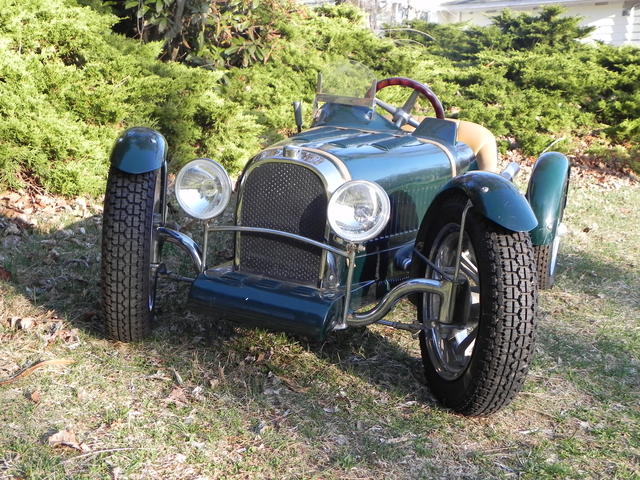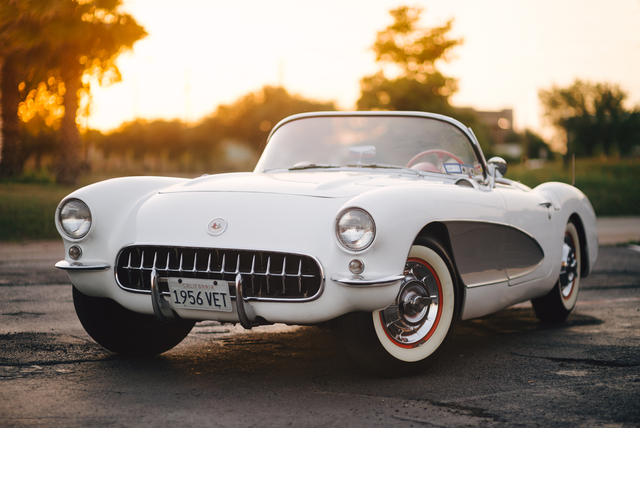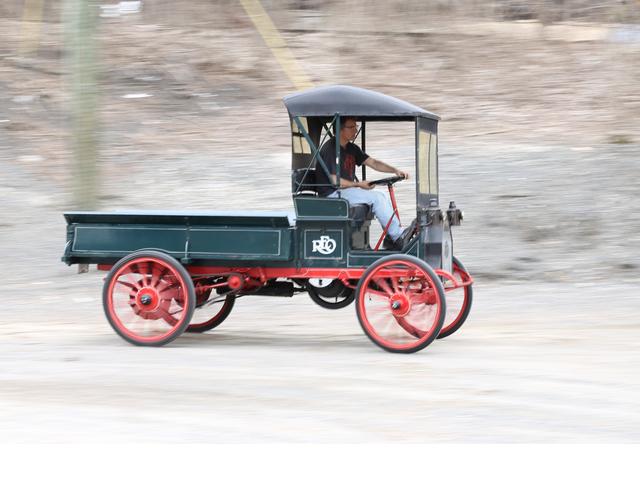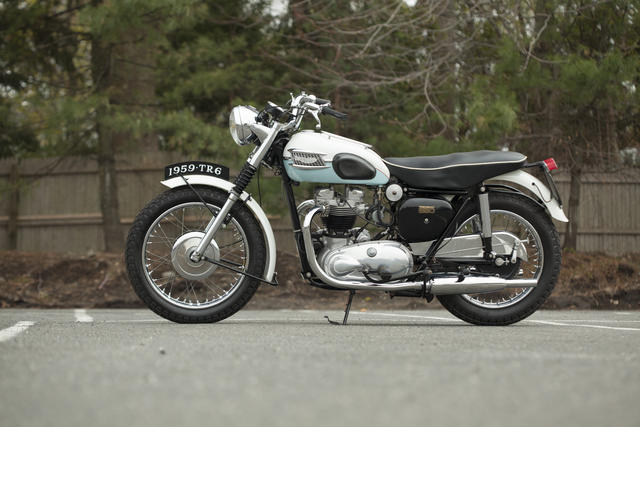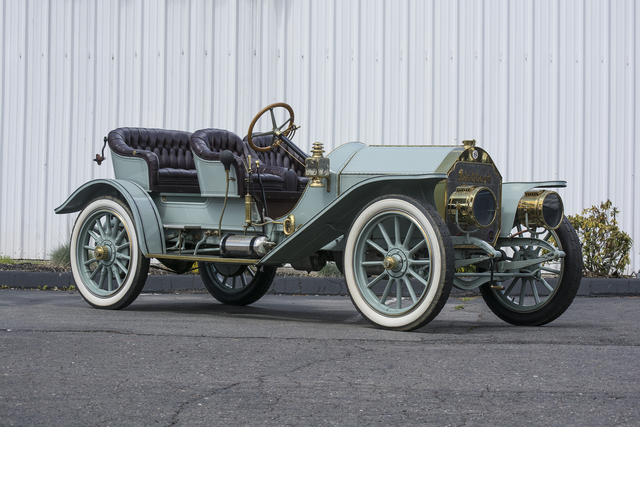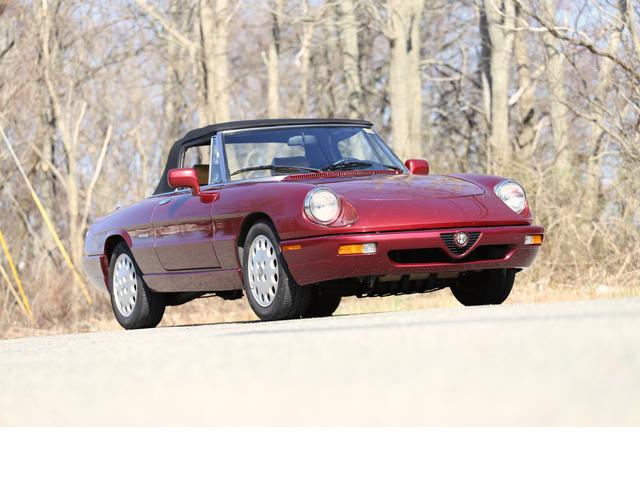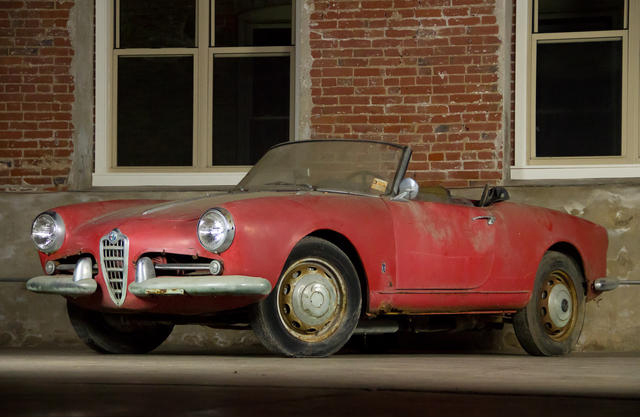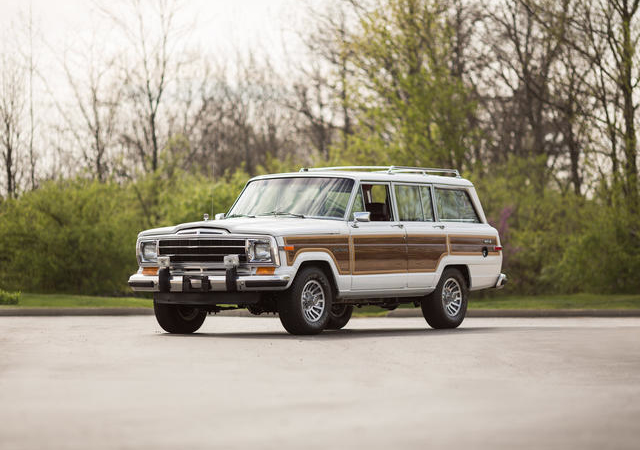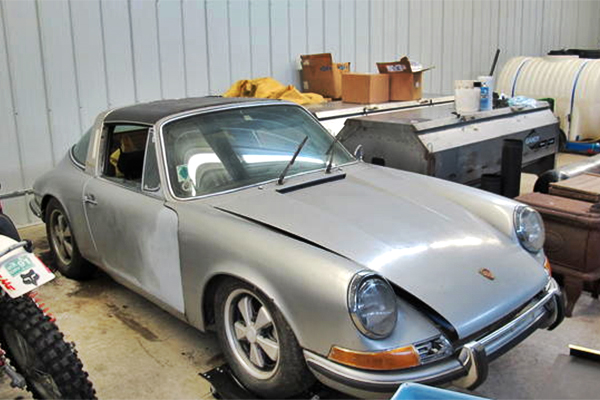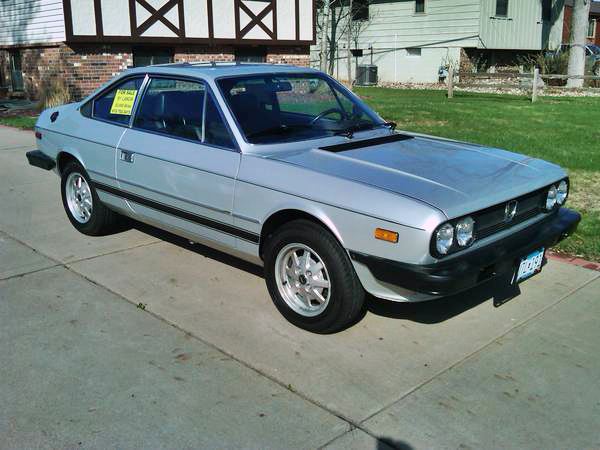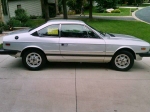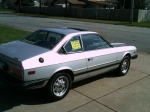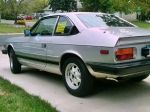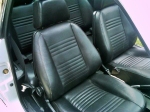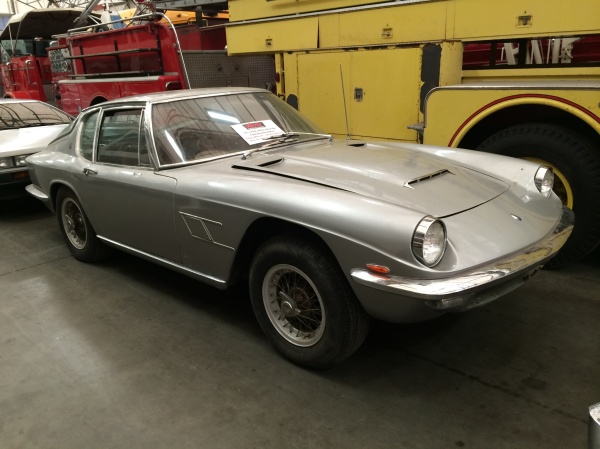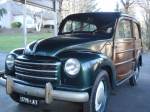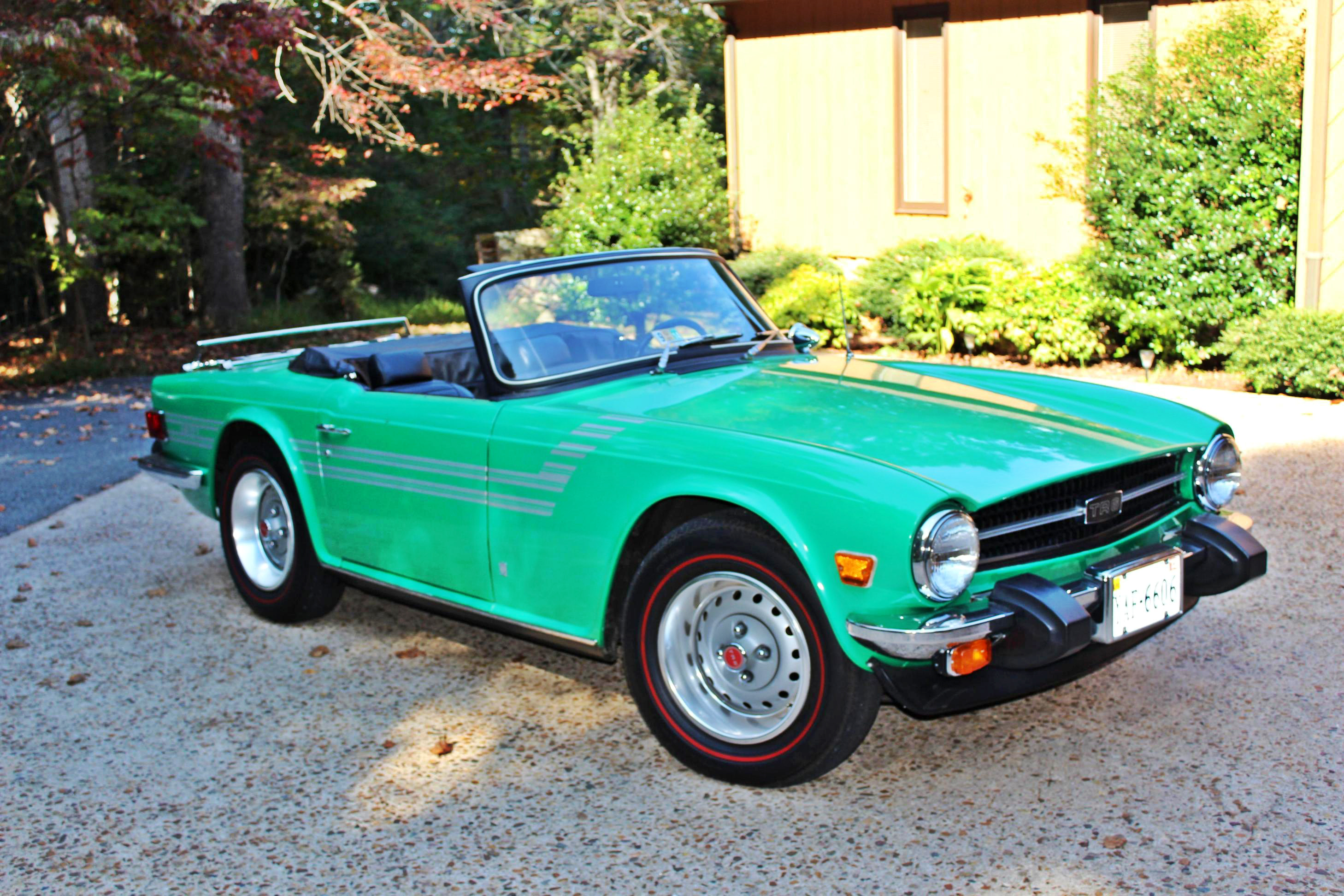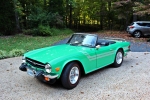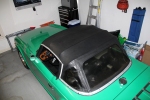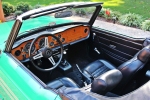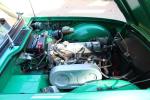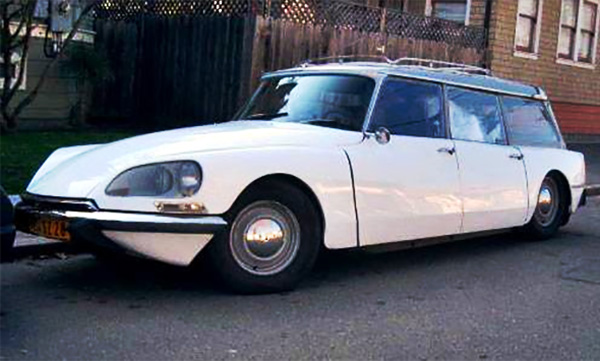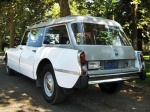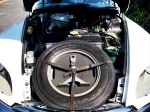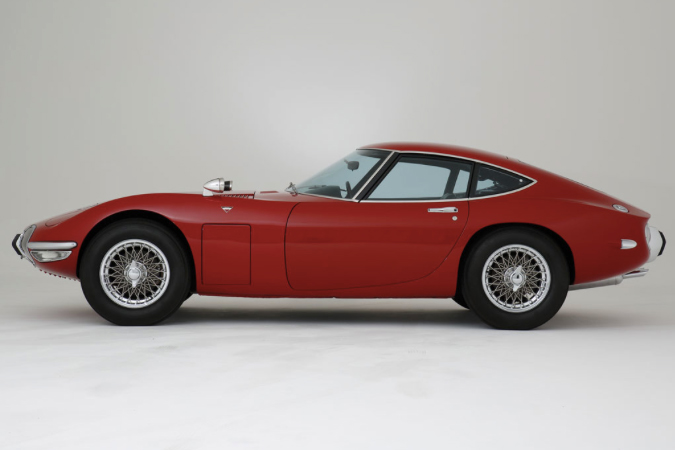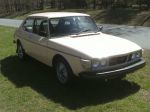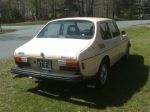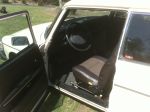Yesterday’s Bonham sale at the Greenwich Concours d’Elegance produced some jaw-dropping results like the 1975 Lamborghini Countach LP400 Periscopa that went for a staggering $1.1 Million ($1.21 MM after premium). While this and several other lots shattered their high estimates, it was also a day when some bidders drove away with some exceptional buys. These are a few of the standouts:
10. Lot 251 – Bugatti Type 35 Grand Prix Child’s Car by Group Harrington
Sold for $6,250 including premium
This is a very skillfully executed replica, finished in green livery and complete with fine detailing to the original. Multi-battery 2x electric motorbike 36v brushless motors on the rear wheels with a top speed of 14 mph. Highly polished chrome bright-work and active hand brake, aluminum dash with gauge, working horn, and power switches for lights. Wooden rosewood steering wheel and wooden floorboards with faux leather upholstery. Bespoke, period style wheels with inflatable tires. Complete with battery charger and keys.
While hammering at just under the high estimate of $6,000, a running Bugatti for $6,250 all in can still be considered a bargain.
9. Lot 371 – 1956 Chevrolet Corvette
Sold for $55,000 including premium
This 1956 Corvette one of 532 built in Polo white, which is complemented nicely by a red interior and silver coves. The optional 225-hp motor is able to give 0-60 performance in around 7.5 seconds, which was scorching for 1956. Other notable options are power windows (547 built) and signal-seeking radio. The Corvette would hit great heights over the next 10 years, but this is where it all began.
It doesn’t have the appeal of the ‘57 fuelie and the two-speed Hydramatic likely fended off any serious Corvette collectors that may have been in the room, but this is still a great-looking, mostly original Corvette with some decent options including the 255-hp 265 with dual 4-barrel carbs. After some active interest early, it stalled and finally went for the low auction estimate of $50,000 ($55,000 after Bonhams premium).
Sold for $22,000 including premium
This 1911 REO Express was likely one of the many such REOs built for the railroads, used primarily to move luggage and cargo along the platform where the single cylinder engine was more than sufficient. This rare survivor has been part of a small private collection for the last six years or so. In that, it has received a good deal of work to allow for reliable road use. The engine recently had new valves and guides fitted as well as machine work to the cylinder. The car today starts easily and runs smoothly with its original REO bronze carburetor. The current owner has regularly attended his local “cruise night” with the REO turning lots of heads. This REO is fun, charming and represents a seldom seen piece of motoring history. Well-kept and ready to enjoy, this is bound to bring great fun to its new owner.
A complete, running, very presentable, and quaint runabout from the brass era came in below its auction estimate of $25,000 with a $20,000 hammer price and $22,000 final sale.
7. Lot 308 – 1959 Triumph TR6 Trophy
Sold for $12,980 including premium
This numbers matching 1959 TR6 was restored prior to the current owner’s acquisition of the bike in 2006. Found in Pennsylvania, it is classic example of why Triumph builds aesthetically identical bikes today—because it is just so good looking and well proportioned. With its amply sized 649cc twin—which at the time was considered far bigger than it is today—it has plenty of power to motor down the road or putter around town. The two-tone white over light blue tank with red pin-striping is a theme continued onto the fenders while the saddle matches nicely with its black vinyl and white piping. The ‘pedestrian slicer’ front license plate holder completes the package nicely.
The quality and presentation could’ve easily commanded something closer to the high estimate of $18,000 yet it could not reach its low of $14,000. It closed at $11,800 with a final price of $12,980 including premium.
6. Lot 399 – 1955 Messerschmitt KR200 Kabinenroller Kabrio
Sold for $27,500 including premium
This early KR200 was found in Northern Illinois and cosmetically restored about eight years ago. Finished in ‘Mary Kay Pink’ with a black vinyl interior, it was converted from an enclosed canopy to the open Kabrio top at some point—possibly prior to the restoration. The next owner, who was looking for a Messer, had tasked a well-known Messerschmitt guru to find him a suitable car. Upon discovering this example about five years ago, it was taken to his shop and mechanically restored as it was not running at the time of purchase. Once completed, the little three-wheeler was reported to be a strong runner and lovely driver. Shown a few times since being finished, it has been a consistent crowd favorite.
Perhaps it was the color, perhaps it was because of the conversion from a fixed-cabin, or maybe there’s some spotty history, but this little Messer fell well short of its $40,000-60,000 estimate and miles from the six digits had it been an original Kabrio. Still, an auction price of $25,000 with $27,500 at the register for a very presentable open Messerschmitt undoubtedly made for a happy buyer
5. Lot 398 – 1910 Stoddard Dayton Model 10K Baby Tonneau
Sold for $170,500 including premium
This fine Stoddard Dayton is powered by the firm’s 50hp overhead valve four. With nearly square bore and stroke dimensions it is a higher revving, more sport-oriented engine. Stoddard applied much of their knowledge learned on the race track to producing high performance road cars like this one. Having resided in a long term private collection, the Model 11k was restored several decades ago but presents handsomely today. Nicely finished with great brass work, the big Stoddard has an imposing husky look. The large brass radiator hides the car’s most impressive feature—its wonderful engine. Lifting the hood reveals the heart of this machine with its eight huge rocker arms working its large exposed valves. The sporty “baby tonneau” body work matches the sporting character of the frame perfectly and still allows the practicality of a few extra seats. The car rolls along on the distinctive oversized wheels that Stoddard-Dayton was known for. This car is bound to impress at any brass car event. One should have no problem keeping up with the fastest of the cars with this potent and lightweight machine.
With the recent popularity of brass cars, combined with excellent drivability coming from the 50-hp OHV motor, expectations were realistic if not low with an estimate of $195,000-235,000. This handsome little sportster struggled, painfully struggled, to reach $155,000, culminating in a $170,500 final sales price. If current trends continue—and there’s no indication they won’t—this may prove to be the buy of the day.
4. Lot 372 – 1951 Chevrolet 3100 Pickup
Sold for $16,500 including premium
The 3100 presented was built in Baltimore in March of 1951. While the basic styling and design of the 3100-Series changed little from 1947 until 1953, a near constant stream smaller changes were made throughout the series. Among the additions for ’51 were the inclusion of vent windows in the doors for some added cabin airflow and the final year for a number of chrome interior trim pieces such as the window handle knobs and wiper knob. As a truck produced in the earlier part of the year, it is among the final 3100s to feature a nine-board bed in place of the eight-board bed that was introduced later in the year.
This truck was the recipient of a thorough restoration by its previous Dayton, Ohio owner in 1995 and 1996. Finished in Mariner Blue over dark saddle vinyl, it features a number of rare options including an AM radio, heater, dual side mirrors, dual spotlights, and a windshield visor to keep the sun out of your eyes. Acquired by the vendor in the spring of 2005, it has been very sparingly driven since purchase spending the bulk of its time in a heated and air conditioned garage. Accompanied by a box of receipts documenting its restoration, original dealer brochures, a service manual, and an original owner’s manual, it will be right at home going to or from the farmers market, beach, or estate.
3100s in this condition generally do well and the auction estimate reflects that at $24,000-30,000. However the bidders weren’t in the room for this one on Sunday. It went for $15,000 and final sale price of $16,500.
3. Lot 321 – 1973 Volkswagen Type 181 The Thing
Sold for $8,800 including premium
So square it’s cool, this Blizzard White “Thing” is about the most fun you can have with your pants on. Outfitted with a number of dealer options including roll bar, front push bumper, and rear tire carrier—all useful safety features should things get too fun—as well as oak stave ‘floormats’, shift console and ‘The Thing’ side stripes should anyone inquire just what it is you’re wheeling around. A well-kept car that is free of rust, it was resprayed in its original color in 2003 while its black vinyl interior, top and side curtains are all in very nice order. On the road ‘The Thing’ is reported to drive beautifully with a smooth transmission and the ability to cruise at over 60mph with ease. Between this and its tidy aesthetics, it creates a smile for driver, passengers and those that you pass by on the road, all in all a great weekend/vacation car.
A solid, rust free 181 Thing can fetch $20K on any given day, yet bidders in this room on this day only mustered $8,000 for a bargain $8,800 final selling price. Well bought!
2. Lot 326 – 1991 ALFA ROMEO SPIDER VELOCE
Sold for $15,950 including premium
This Series 4 Alfa Spider is among the final iteration of the Spider to be imported into the United States. Finished in the rare and desirable color combination of Vino Rosso over tan leather with a black top, it is a Georgian car from new that has spent the last few years in the Boston area only driven in the summer, enjoyed garaged comfort for all of the winter months and has been meticulous maintained throughout the rest of the year. Kept as factory original as possible, the only deviations from stock are the elegant wood shift knob and a high performance stainless steel exhaust system with a throatier roar. The level of care of which this Alfa has been the recipient is apparent in its original paint, soft leather, and over all finish. Taken to Alfa-marque specialist Accel Automotive and Glynn Motors, recent service work includes a transmission rebuild, new rear springs, suspension bushings, tires, motor mounts, Stay-Fast top and rear window, as well as speedometer and tachometer restoration. Reported to be a strong runner with its power features in working order, it shows fewer than 56,000 pampered miles on the odometer.
A Series 4 Alfa Spider in a lovely color combo with less than 56,000 well-maintained miles. Auction estimate was $20,000-25,000 which appeared right on the money. A $14,500 hammer price would’ve been a bargain for a base model. For a nicely kitted Veloce in rare Rosso Vinaccia, it is a flat-out steal.
1. Lot 390 – 1980 Mercedes-Benz 450SEL
Sold for $3,300 including premium
This Silver Blue Metallic over tan leather 450SEL has been meticulously cared for the last quarter of a century. Always garaged kept and regularly maintained by marque specialists, it still shows very well after nearly three and a half decades. Showing just a bit over 81,000 original miles on the clock, it will no doubt be as handsome and enjoyable a luxo-cruiser today just as it was when it was new.
Healthy values of the W126 have somewhat overshadowed the previous generation W116, but a high-quality, low-mileage, well-maintained example like this one surely should have come closer—if not surpassed—the auction estimate of $10,000-15,000. A very fortunate and no doubt happy bidder got it for $3,000, with the 10% premium bringing it to $3,300. It was easily the bargain of the day.
